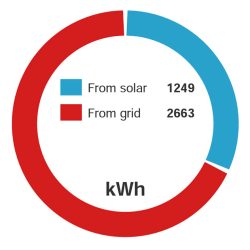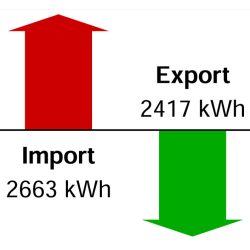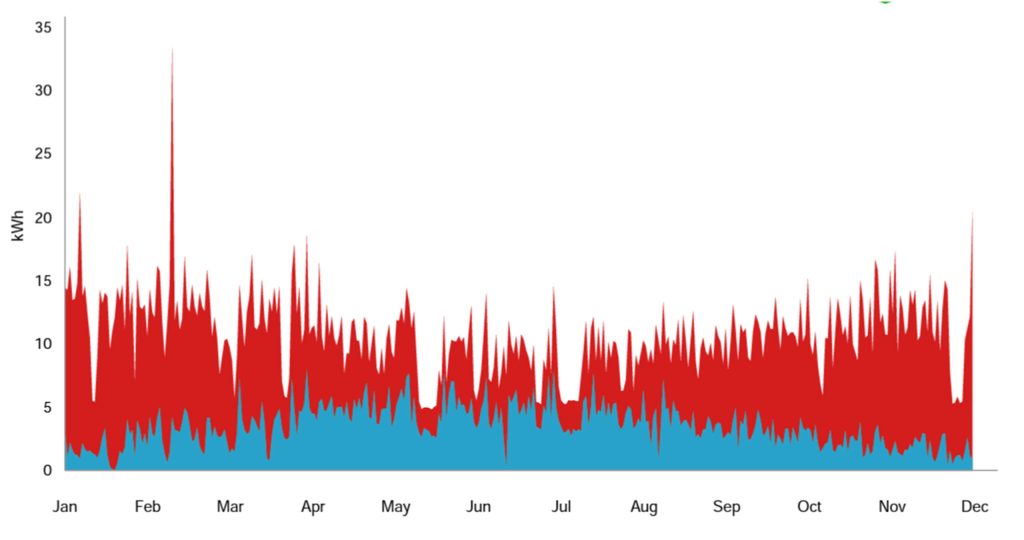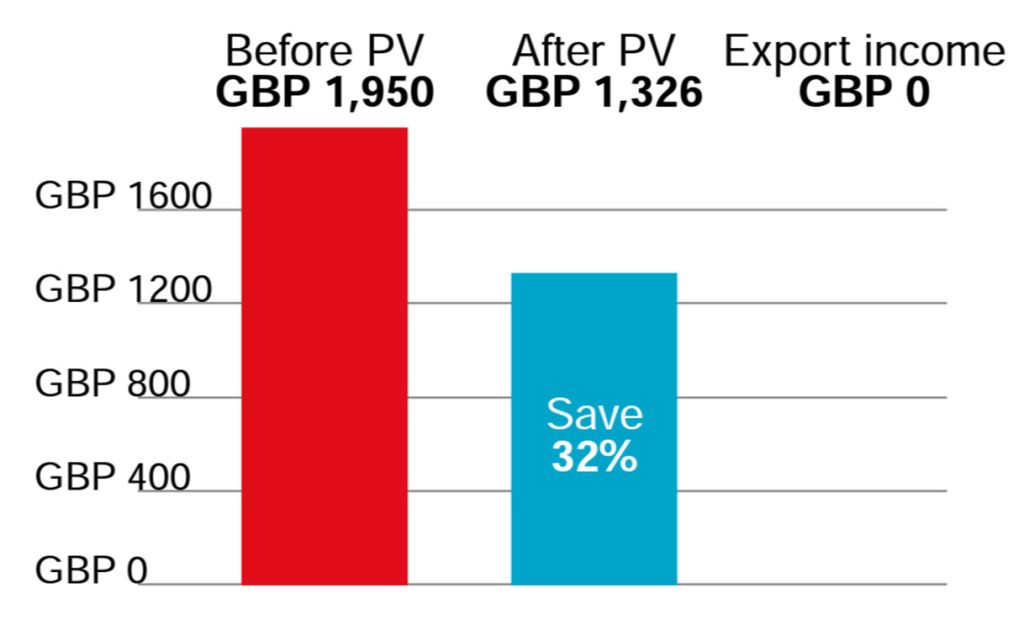Solar Panel System Breakdown:
Our Step-by-Step Process
In this comprehensive example, we will walk you through every essential aspect of the solar installation, detailing the key features and benefits that can await you. As a leader in renewable energy solutions, we are committed to providing top-quality service, cutting-edge technology, and unmatched expertise to make your journey to a greener future seamless and rewarding.
Embrace the opportunity to take control of your energy consumption and join the movement towards a cleaner, more sustainable world. Let’s explore the incredible possibilities of a solar-powered future tailored to your bungalow’s specific requirements. Read on to discover how A&D Solar Panel Installations can turn your vision into a reality!
£5,763 inc VAT
Expected payback 11
years. Estimated first
year savings £624
4.20 kW PV System
10 x 420W panels,
Growatt MIN 4200 TL-X Dual MPPT 1ph (inc DC isolator) inverters
3,666 kWh/yr
Annual CO2 savings
of 778 kg
System Performance
We make an estimate of the annual energy generation of the client’s system using the procedure recommended by the UK’s Microgeneration
Certification Scheme (MCS). This takes into account the following factors that affect the output of a solar array.
System Location
Sunlight is weaker in the north of the UK than in the south, so the tables we use divide the country into a number of zones based on your postcode.

Orientation: -10° Pitch: 35°
System Orientation
Solar panels that face south receive a little more sunlight than panels that face east or west. However, in diffuse light the orientation of the panels makes little difference, so the effect is less marked than many people imagine.

The Degree of Shading
If there are trees, neighbouring buildings or nearby high ground that will shade your PV array, the output of the system will be reduced. We have used a ‘sunpath diagram’ that estimates how often sunlight will be blocked from reaching the panels.
Shade factor: 0.89 Kk: 981

We expect your system to generate
3,666 kWh per year
Your Energy Explained
In addition to the MCS calculation of system output,
we run a more detailed model of your system
to estimate how much of the electricity generated
by the system you are likely to use yourself and how
much will go to the grid.
Smart Export Guarantee (SEG) Information
The Smart Export Guarantee (SEG) enables Generators to receive
payments from electricity suppliers for the electricity they export
back to the National Grid, providing specifc criteria are met. Your
installation will be MCS accredited, which means that you should
be able to apply for SEG payments from your electricity supplier.
Further details on the SEG and its eligibility requirements,
including how to apply, can be found online at ofgem.gov.uk
Annual Generation

Annual Consumption

Annual Import/Export

Where Your Electricity Will Come From in a Typical Year
Based on an electricity usage of 3900 kWh per year, the graph below shows how much electricity used in the property is expected to come directly from the solar panels (blue) , how much is expected to come from battery storage (green), and how much is expected to be imported from the grid (red).


Financial Benefits
Based on our model, let’s explore a past example where a solar PV system generated 3,666 kWh of electricity. In this scenario, the property was expected to self-consume 1,249 kWh of this generated electricity, accounting for 32% of its annual consumption of 3,900 kWh.
At an electricity tariff of £0.50/kWh, this led to a significant saving of £624 on the electricity bill, reducing it from the previous £1,950 to an estimated yearly bill of just £1,326. Embracing solar power not only contributes to a greener environment but also opens the door to substantial cost savings on electricity expenses.
Overall, the savings and benefits are
expected to be around £624 in the first
year after the system is installed.
Payback
Using a more detailed model that also takes account of longer term factors such as inflation, gradual degradation in panel output over time and financial discount rates, we expect the system to pay for itself in 11 years.
Over a projected 25 year lifetime, we expect the system to have a Net Present Value of £5,713. A positive net present value is a good indication that an investment is financially worthwhile.
Disclaimer: Nothing in life is certain. Cloudy periods, growing trees, and even pigeon droppings can affect the output of your array. No-one really knows how electricity tariffs will change in the future, or what inflation will be in 10 years time. We have based our calculations on an inflation rate of 2%, electricity price that rises with inflation, a discount rate of 4%, an import electricity tariff of 50p/kWh and export payments of 0.0p/kWh. Returns are not guaranteed.
Financial discounting is a method used to calculate the worth of future money in today’s terms.

Environmental Benefits
Your new PV system will supply your property
with clean, green electricity – and in sunny
periods some will also be exported back to the
grid.
Overall you’ll be making a big contribution to reducing CO2
not just by lowering the carbon intensity of your own
electricity, but by putting low-carbon electricity back in the
grid for others to use too.
Your current electricity supply produces
743 kg CO2
each year
31% will be supplied by solar, saving
234 kg CO2
each year
2,566KWh will be exported, saving
545 kg CO2
each year
Total savings
778 kg CO2
each year
Your yearly CO2 reduction
of 778 kg is equal to…
a car ride of
2780 miles
the co2 absorbed by
36 trees